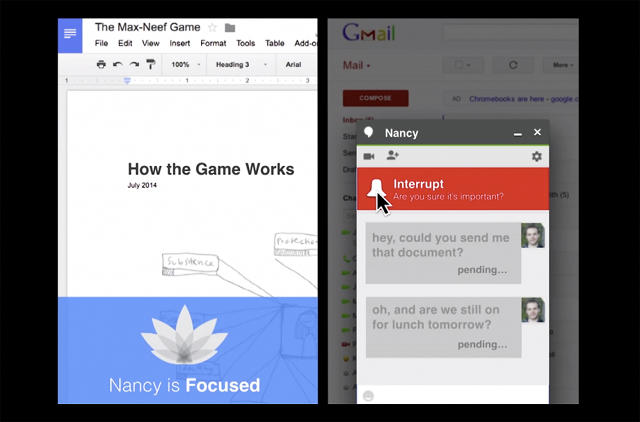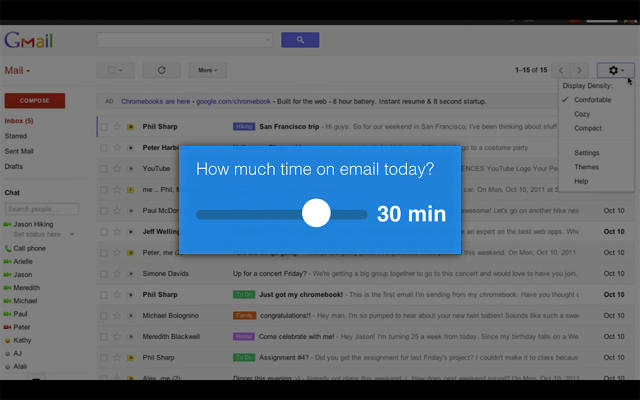How Our Tech habit–and dependable Distraction–Is A Solvable Design problem
cease blaming yourself in your incapability to unplug. as of late’s apps and gadgets are designed to seduce you. What if that might trade?
October 26, 2015
We are inclined to blame ourselves for tech dependancy—if we will not lend a hand watching the next kitten video, or checking e-mail 15 seconds after we remaining checked, it looks as if a problem of strength of will. however perhaps we will have to cease blaming ourselves and blame our distraction on unhealthy design.
A movement called Time neatly Spent argues that we must reconsider how we wish to spend our days and start asking tech corporations to redesign their merchandise to enhance what we in truth care about, slightly than screen time. bearing in mind that the typical American now spends 11 hours a day having a look at gadgets, this comes not a moment too quickly.

the problem is that in an “attention economy,” the intention of virtually each web site or app is to do no matter is takes to maintain you looking at it, so as to sell more ads. “Their aim is to maximize screentime,” says Tristan Harris, design ethics and product “philosopher” at Google and one of the most leaders of Time smartly Spent.
“they’ve to maximize it—by means of shareholder duty, if their business is consideration,” he says. Meditation apps, instructional news web sites, and fb, he says—”everyone is taking part in the identical recreation.” (Google too, we will have to word).
Are we actually clicking on a hyperlink as a result of we wish to or as a result of it is been designed to be irresistible? most of the people do not give this various idea.
“Is the place we spend our consideration and time in a day reflective of what we care about?” Harris says. “Or is it reflective of the types of issues which might be more seductive at tapping into our psychological instincts—the websites that have been higher at preserving us scrolling, higher at writing a suave headline?”

though much of today’s digital world relies for your attention to live on, Harris sees just a few ways to assault the issue. Designers might start with the home monitor of a phone or a web browser—places that don’t rely on merchandising or not as much.
“Apple does not need to maximize the period of time you spend on the homescreen taking a look at stuff,” says Harris. “because they sell you a cellphone, what they are most all in favour of is in two years you buy some other phone.”
Chat or e mail is also redesigned relatively simply to lend a hand people concentrate—with out absolutely disconnecting and probably missing one thing important, particularly at work.
in a single mockup, designers created a version of chat that lets anyone set their status to “centered,” so if any individual else pings them, they is not going to see it except their duration of focal point is over (research convey that after an interruption, it takes 23 minutes to get back on activity). but if it can be pressing, the 2nd individual still has an solution to interrupt if wanted. it can be transferring the design goal: instead of trying to make it as simple as possible to talk to anyone, it’s seeking to lend a hand them work as optimally as conceivable.
For a web page that currently relies on ads, Harris suggests that the industry variation could evolve. “i think up except now the talk about promoting has been about, okay, i’ll pay, after which i do not see any ads,” he says. “that does not really feel like an enchanting change. when you consider what a person values, they don’t need pay $5 or whatever simply to no longer have rectangles exhibit up on a page.”
however any person could be serious about paying for a web page that helps them spend their time another way. A cooking site, as an example, might stop measuring page views and check out to have the opportunity to measure how a lot time any individual spent in the kitchen cooking food that they ultimately enjoyed.

a few firms have already got a identical edition. Couchsurfing, a website that matches travelers up with a free situation to crash—the ultra-low-funds model of Airbnb—does not focus on how many people use the website online or make bookings. as an alternative, they measure how vacationers and hosts rate their time collectively. they also recognize that the general public want to spend much less time on-line—so that they subtract the time on their website online, ending up with internet positive time spent.
If some websites supplied paid variations that helped people spend their time higher, they might not essentially value that much. When Harris final seemed on the numbers, he found that the average facebook user is value about $7 a 12 months to the corporate in revenue. it’s no longer not possible that some individuals would be keen to pay $7 a year to higher use their time on fb. Or possibly even more.
“this is more or less what took place with natural meals—when you say here’s this valuable factor people need, that you could in fact promote it at a slightly higher worth,” Harris says. “you could make more money off people who need the conscious, top rate, better-for-us versions.”
There are additionally another up to date experiments, like Google’s Contributor software, which permits you to bid on your worth to a website so you don’t see ads. “You pay how much you value your consideration, after which the advertisements don’t exhibit up,” he says. “that’s a real functioning product now.”
ultimately—with enough pastime—consideration may well be one thing that society values enough to construct into policy, so merchandise always need to be designed to recognize it. “presently, your attention isn’t one thing we’ve got precise a human right,” says Harris. “We if truth be told say the market values your consideration, so if you need it again, you do not simply get to get it, you have to pay us for it. Which is kind of a weird state of affairs to be in.”
Harris and collaborators like Joe Edelman have began major workshops with designers who need to take a unique manner. progressively more designers have been .
“you know the way to make issues work neatly for folk, and then you definately go to work at any one of these attention economy tech corporations, and regardless of need you wish to have to do to sort things for folk, it’s not relevant—it issues, ‘does the item keep individuals’s consideration or now not?'”
on the meetups, designers analyze a section of technology to be mindful the way it shapes any individual’s time—just like the smartphone. “whilst you wake up within the morning and turn your cellphone over, you see this listing of notifications, and that just places somebody in a mode where they owe this debt to the sector,” Harris says. “it can be the same as the telephone is pronouncing these are the things which might be vital for your lifestyles to be fascinated with.”
next, the designers spend a few hours the usage of a technique to redesign that interplay. a few of it can be one thing they can comprise into their work in an instant—any individual at the on-line schooling website online Khan Academy, for example, might recall to mind new methods to measure success beyond metrics like how many times students watch a video. another site might be capable of recall to mind the right way to proceed to maximize monitor time—at least for now—but in a method that’s if truth be told related to what people need to do.
however real trade is not likely to come, Harris says, except consumers ask for it. He compares it to the cigarette trade. “that they had this product, it is highly addictive, they’d teams of engineers who were working on maintaining it addictive,” he says. within the ’60s, a tobacco firm developed a safer cigarette—but didn’t deliver it to market because they did not want to make their other products appear dangerous.
“You need shopper demand, you need folks to demand what’s good for them,” Harris says. “as a result of that is what lets these companies do the best thing. in any other case they’re roughly in a bind.”
(99)














